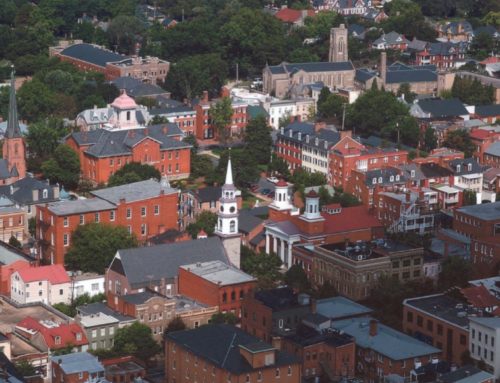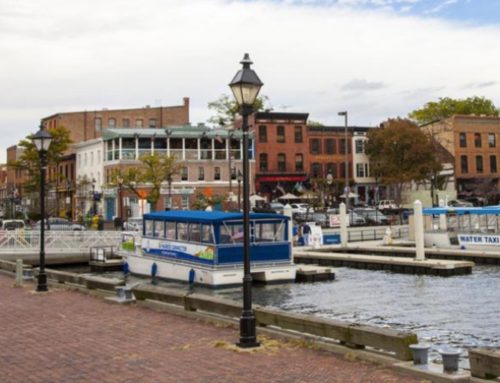Excerpt from MyEasternShoreMD:
The Historic District Commission, meeting Wednesday, Nov. 4, got a lesson on solar energy installations. At the same meeting, it approved two solar installations in the Historic District and suggested it is open to a wider application of the technology.
Scott Johnson of Advanced Solar, the company installing solar arrays for members of the Kent County solar cooperative, took the commission through the basics of solar energy.
…
Following Johnson’s presentation, the commission reviewed an application for solar panels on a Queen Street residence. Johnson, whose company is to perform the installation, spoke on behalf of the property owners, Anthony and Catherine D’Elia.
…
Chairwoman Alexa Silver asked which part of the roof the solar panels would be installed on. The roof has both a sloped potion and a flat one.
Johnson said the application is for the lower, flat portion of the roof, which he said is not visible from the street. He said the installation would require 11 panels, which he said would provide about 40 percent of the house’s electrical power.
There was some discussion about the possibility of an installation on the other portion of the roof, which would currently be visible, but would not be if the house next door is rebuilt. Minch said he would have liked the opportunity to hash out whether the commission would allow that installation.
McGuire said the property is non-contributing, which makes the criteria less rigorous. On contributing structures, the standard has generally been that solar panels are permitted as long as they are not visible from the street.
The vote to approve was unanimous.
The commission had already voted to allow a change in the solar configuration of the new Sultana Education Foundation building on Cross Street.
Drew McMullen, president of the Sultana foundation, said the commission previously agreed to allow solar panels on the flat roof of the new addition, from which point they would be invisible from street level. However, he said, for the building to achieve the LEED platinum certification Sultana is seeking, panels would need to be put on the south side of the new gable, to benefit from direct exposure to the sun.
Asked if there would be panels on the historic building next door, a former Methodist church and newspaper office, McMullen said no. “We knew that wouldn’t fly,” he said.
The commission had no objections to putting panels on the south surface. “They seem to be part of the whole package,” said McGuire, referring to Sultana’s stated intention of making its headquarters self-sustaining. The vote to approve was unanimous.


